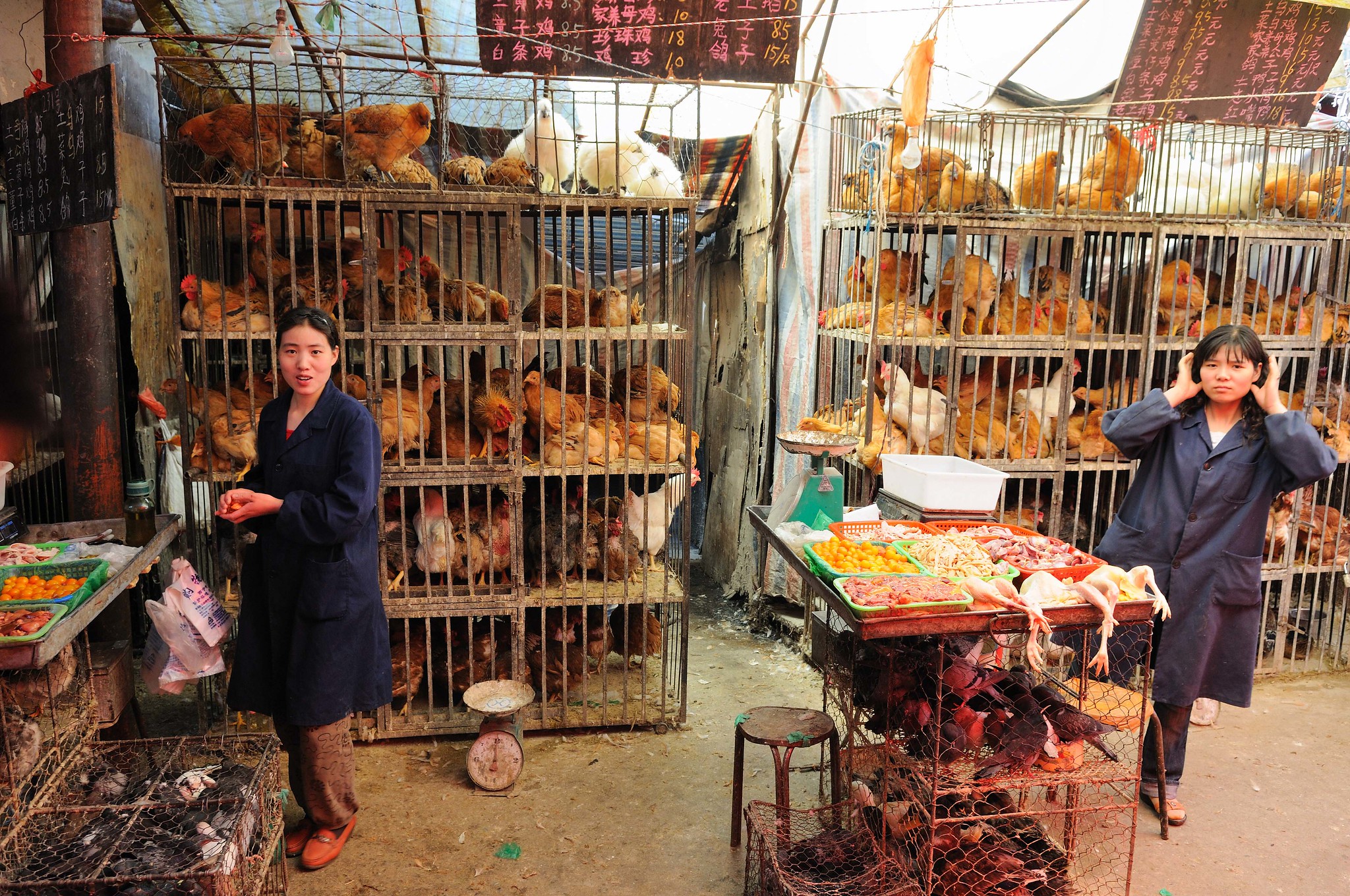News release
From:
Researchers report an association between China’s live poultry trade and avian influenza spread. The highly pathogenic avian influenza virus (HP AIV) H5N1 has spread to more than 60 countries since its identification in 1996, with an estimated 50-60% fatality rate in humans. Most H5N1 cases are linked to exposure to live poultry, which are thought to play a key role in transmission. Huaiyu Tian, Oliver Pybus, Nils Stenseth, and colleagues compared the structure of live poultry trade networks in China with genome sequences of H5N1 and two related AIV lineages from domestic poultry to estimate the role of poultry trading in virus transmission. Movement of virus lineages tended to occur between nearby provinces, suggesting a geographically continuous process of virus transmission. The intensity of poultry trade between provinces was a significant predictor of virus spread. The authors identified five regional live poultry trade communities (LPTCs) within China and used viral genome sequences to reconstruct the evolutionary history of each viral lineage. Clades within each lineage tended to coincide with specific LPTCs, and movement between LPTCs was often associated with major evolutionary divergences. Lineage transmission was much more likely to occur within LPTCs than between LPTCs. The results suggest a strong association between virus transmission and the live poultry trade network in China and could inform prevention and control efforts, according to the authors.
Expert Reaction
These comments have been collated by the Science Media Centre to provide a variety of expert perspectives on this issue. Feel free to use these quotes in your stories. Views expressed are the personal opinions of the experts named. They do not represent the views of the SMC or any other organisation unless specifically stated.
Professor Robert G. Webster, Department of Infectious Diseases, St. Jude Children's Research Hospital, USA
This is an extremely timely paper by an international consortium of scientists from multiple centers in China, United Kingdom, Norway, Belgium and the United States on the role of live poultry markets in the spread of multiple subtypes of H5 avian influenza viruses. While the H5N1, H7N9 and H5N6 avian influenza viruses have not yet learned to transmit human-to-human they do have pandemic potential.
This paper provides strong evidence for the role of the poultry trade network in the spread of these three H5 genotypes and considers the role of wild bird migration for long distance spread. There is a still a paucity of sequence data on influenza viruses from wild birds outside of Hong Kong and Qinghai Lake on which to base analysis of long distance spread.
The paper deals with prevention and control efforts to disrupt the spread of influenza viruses between source and sink locations. While understanding the spread of H5 influenza viruses is essential for control an even more important strategy is to prevent the emergence of these viruses in live poultry markets by permanently closing such markets.
The emergence of H5 influenza viruses, of SARS, of the new coronavirus (COVID-19) have been traced to live animal markets. China is now a wealthy country that could phase out such markets particularly the exotic animal markets.
Dr Joanna McKenzie, One Health epidemiologist, School of Veterinary Science, Massey University
This paper is interesting not so much for the authors’ findings, which are consistent with existing knowledge on transmission of the different clades of avian influenza viruses, but for its underlying demonstration of the value of:
- Good quality data on live poultry trade networks and migratory bird movement, and
- Good quality data on the distribution of outbreaks and the genomic sequence of avian influenza viruses (or any pathogenic organism) associated with each outbreak.
Understanding poultry trade networks helps to prepare for and respond more quickly to the introduction or emergence of pathogenic organisms (including viruses, antimicrobial resistant bacteria, etc) in poultry. It identifies major poultry trade networks (described in the paper as live poultry trade communities) plus hubs that link the different networks.
Some hubs act as a major source of poultry for the different communities, i.e. areas that have a high density of poultry production and supply a high proportion of birds to other areas. Some hubs have a higher probability of receiving poultry from the different networks and thus may have a higher risk of virus arriving in the area.
Having knowledge of these hubs, provides the opportunity to target surveillance to detect outbreaks of known diseases such as avian influenza plus to detect new and unusual diseases in these areas, referred to as risk-based surveillance.
Good quality outbreak data, particularly good geographic coverage of outbreaks and consistent coverage over time, enables an understanding of the distribution of outbreaks. Genetic analysis of viruses associated with the outbreaks is essential to understand the distribution of specific genetic clades geographically and over time.
The important message for me from this paper is the importance of having good surveillance systems in place to detect and investigate disease outbreaks, record details of the outbreak, conduct genetic analysis of the pathogens, and to report the findings nationally. This is important for detecting and monitoring zoonotic diseases in animals and/or people and understanding the public health risks of the outbreaks.
It is important to be careful not to make inferences that avian influenza has any link with COVID-19! The only link is that they are both zoonotic diseases but they are extremely different diseases.



 International
International



